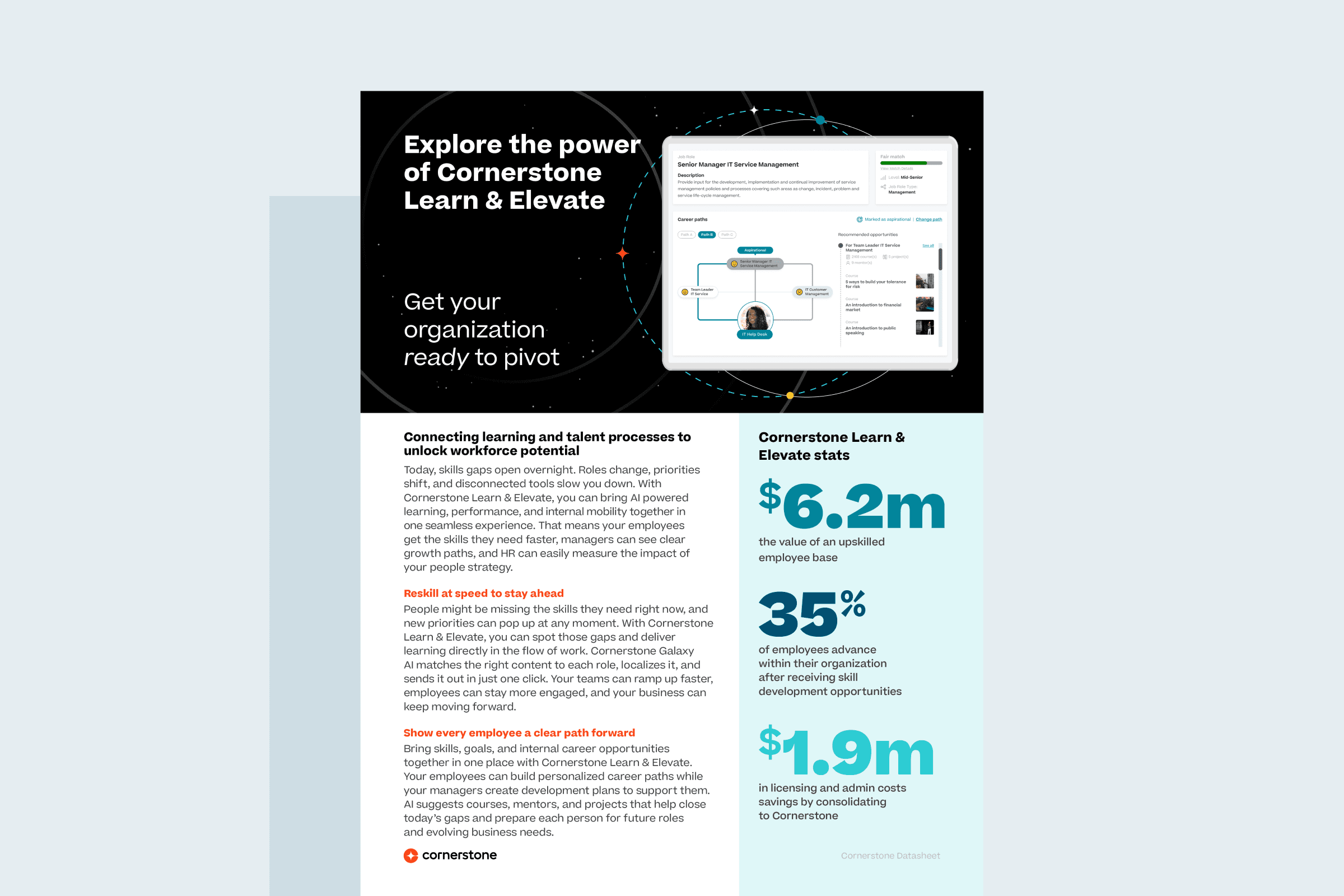Key Takeaways
- Purpose trumps paycheck for modern workers, with 89% of American employees willing to make lateral career moves without financial incentives to find greater fulfillment.
- The traditional single-track career path has disappeared, with more than half of employees expecting to change careers entirely and 42% anticipating three or more distinct careers in their lifetime.
- Geographic mobility is highly valued yet underutilized, with 77% of employees eager to relocate for work opportunities, but only 15% of employers offering relocation options.
The "hire-to-retire" mentality is all but gone from the modern workforce. Today's employees are likely to have several different careers (and even more jobs) during their lifetime. And while a resume of short-stinted jobs used to be considered an atrocity, employers are quickly adapting to the new landscape—hiring and promoting based on breadth of talent over length of tenure.
But what's motivating employees to make these critical life changes? While higher salaries, company perks and exceptional office cultures are often touted as the keys to enticing top talent, our recent "Career Trends Report," conducted by Kelton Global, found more important factors behind employees' career choices.
Today's employees value purpose over paycheck, and are willing to make life-altering decisions and considerable sacrifices in order to find a sense of satisfaction and fulfillment in their careers. In fact, our report shows that 89 percent of American employees would consider a lateral career move with no financial incentive. (And we're not just talking millennials here, 81 percent of Baby Boomers and 91 percent of Gen Xers responded in kind).
In our employee-driven job market, these sentiments undoubtedly have serious implications for employers when it comes to recruiting talent, as well as engaging and retaining current employees. Here, three major trends employees should pay attention to when it comes to the weight of purpose in the workplace.
Lateral Opportunity Leads to Loyalty
Annual bonuses and salary bumps rarely go unappreciated, but most disengaged employees are looking for new experiences over a bigger paycheck. The majority of employees are willing to make a lateral move—a position with the same or similar title and pay grade but in a different department—if it better aligns with their skills and interests.
When considering a lateral move, nearly six in ten employees would seek a position with greater personal satisfaction, and 66 percent of employees will first look to see if there is an interesting and open position at their current company before looking elsewhere. In fact, more than one in five employees have already made a lateral move at their company.
It's clear that employees want to remain loyal to their current employers—but only if they feel growth opportunities are abundant. Offering rotational programs and cross-department collaboration will help your organization provide this growth, as well as give you an edge over the competition: Only 32 percent of respondents say their employer encourages employees to work in different departments.
The Single-Track Career Is Dead
As gleaned from the enthusiasm for lateral moves, climbing the proverbial career ladder is no longer the norm. American employees' would rather strive for a career with purpose and greater satisfaction than strive for "Vice President" next to their name in a lackluster job.
More than half of American employees and more than three in four millennials expect to change careers—not just jobs—at some point. In fact, the report found that 42 percent of respondents expect to have three or more careers in their lifetime.
This reinforces the need for employers to offer more opportunities for workers to stay engaged and happy. Ask your employees about their career interests, and try to align their skills with these passions. When top talent departs, stay on good terms—down the line, it's possible they'll send a respected colleague your way or even "boomerang" back to your company themselves.
Employees Eager to Relocate
The thirst for diverse experiences extends beyond industries or careers and includes actual places, as well. Many employers offer flexible schedules or remote work policies, but our report found that the chance to work in another city is often more valuable to employees than flextime.
Given the opportunity (even temporarily), 77 percent of employees would choose to relocate. Additionally, more than six in ten employees would go to great lengths, such as working six days a week or web conferencing with their boss every day, to be able to relocate. Yet, surprisingly, only 15 percent of respondents say their employer offers relocation opportunities.
These trends represent just a few of the many drastic changes occurring in the workplace today. As the job market continues to shift, with millennial workers increasing and Gen Z entering the workforce, employers will need to adapt accordingly. The first step? Listen to your workforce—the most successful organizations are the ones providing their employees with opportunities to realize their full potential.


